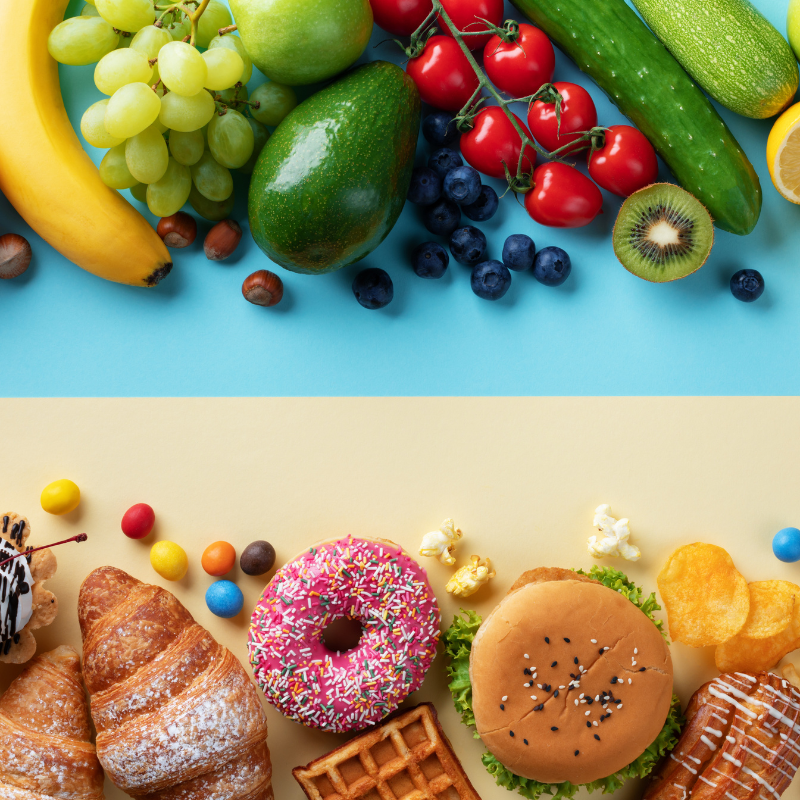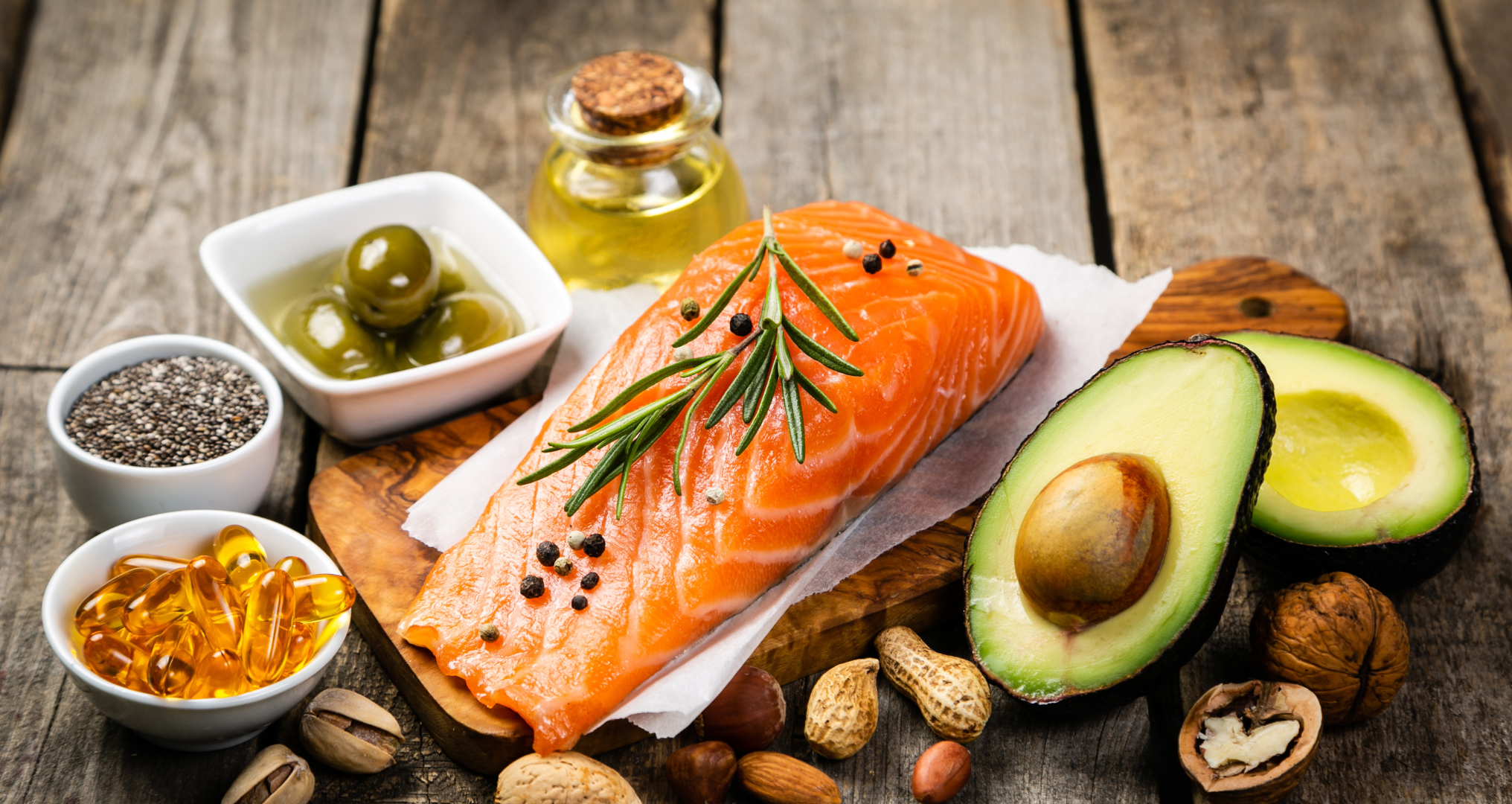High fat? Low fat? No fat?
For years, you’ve been told that eating fat will add inches to your waistline, raise cholesterol, and cause numerous other health problems. Physicians, the federal government, the food industry, and trusted health media sources told us that low fat, low cholesterol was the way to go.
But now we know that advice was not correct or even healthy. Not all fat is the same. So, what is healthy?
The bottom line is, if you haven’t done so already, you can add some fats back into your diet. In fact, you need to. Your brain needs you to do it. Healthy fats are your brain’s friend. However, it can be confusing as to which fats are healthy and which aren’t. So, let’s go over the basics your brain needs to know.
Fat Is Not the Enemy
The human brain is approximately 60 percent fat. To function optimally, it needs to maintain around this level. The low-fat recommendations and diets that gained popularity in the past have been unhealthy in many ways — especially for your brain. Your body’s cellular integrity and nutrient exchange depend on fats. Your cells would collapse and starve to death without them.
Without a doubt, science has disproven the “low-fat is best” philosophy and confirmed that fat and cholesterol are crucial to your brain health and optimal functioning. Research has shown that eating a low-fat diet actually increases your risk of dementia.
Your brain needs fat for:
- Structural support: Fats are essential for providing structural support to brain cells, forming cell membranes, and protecting neurons’ integrity.
- Myelin sheath formation: Myelin is a fatty substance that wraps around and insulates nerve fibers in your brain, forming a protective sheath. Myelin plays a crucial role in cognitive function and overall brain health because it facilitates the faster transmission of nerve impulses.
- Neurotransmitter function: Fats are involved in the production and functioning of neurotransmitters, which are chemical messengers that enable communication between nerve cells. Neurotransmitters are essential for many cognitive functions, mood regulation, and memory formation.
- Cholesterol and synaptic connections: Cholesterol is necessary for neuronal synaptic transmission between neurons. Synapses are the spaces between neurons where neurotransmitters must travel to communicate.
- Antioxidant protection: Some fats, such as omega-3 fatty acids, have antioxidant properties that protect the brain from oxidative stress. Oxidative stress can lead to cell damage and has been implicated in neurodegenerative diseases.
- Anti-inflammatory effects: Certain fats, like omega-3s, also have anti-inflammatory effects. Chronic inflammation in the brain has been linked to an increased risk of cognitive decline and neurological disorders.
Three Types of Fats
There are three major dietary fats in food with various chemical structures and physical properties that affect your brain and body differently.

Saturated
This is what’s typically referred to as “bad” fat. It’s primarily found in animal products like beef, pork, and high-fat dairy foods, like butter, margarine, cream, and cheese. High amounts of saturated fat are also found in most fast, ultra-processed, and baked foods. Eating more saturated fat can cause you to produce more LDL (bad) cholesterol, which can form plaque in the arteries and increase your risk of cardiovascular disease and stroke.
Ultra-processed foods tend to be lower in nutrients and fiber and higher in sugar, saturated fat, and salt compared to unprocessed or minimally processed foods. Some examples of ultra-processed foods include soda, packaged cookies, chips, frozen meals, flavored nuts, flavored yogurt, distilled alcoholic beverages, and fast foods. Two recent large-scale studies suggest that eating ultra-processed foods may exacerbate age-related cognitive decline and increase the risk of developing dementia.
Trans Fats
There are two broad types of trans fats found in foods: naturally occurring and artificial trans fats. Naturally occurring trans fats are produced in the gut of some animals and foods made from these animals (e.g., milk and meat products) may contain small quantities of these fats. Artificial trans fats (or trans fatty acids) are created in an industrial process that adds hydrogen to liquid vegetable oils to make them more solid.
Trans fats are easy to use, inexpensive to produce and last a long time. Trans fats give foods a desirable taste and texture, which is why many restaurant-prepared and processed foods contain them. In processed food, look for “partially hydrogenated oils” in the ingredient list. In 2013, the U.S. Food and Drug Administration (FDA) determined that partially hydrogenated oils are no longer recognized as safe in human food. Several countries and U.S. jurisdictions have reduced or restricted the use of trans fats in food service establishments.
Unsaturated
This is the “good” kind of fat, and there are two types: monounsaturated and polyunsaturated. For good health, most of the fats that you eat should be monounsaturated or polyunsaturated. Eating unsaturated fats can help to raise HDL (good) cholesterol levels. HDL picks up excess LDL in the blood and moves it to the liver, where it is broken down and discarded. You want to have a high HDL-to-LDL ratio. Eating more unsaturated fats and decreasing unhealthy saturated fats can help you achieve this.
Monounsaturated
Monounsaturated fats can help reduce bad cholesterol levels in your blood which can lower your risk of heart disease and stroke. They also provide nutrients to help develop and maintain your body’s cells. Oils rich in monounsaturated fats also contribute vitamin E to the diet, an antioxidant vitamin most Americans need more of. They are found in avocados and peanut butter; nuts like almonds, hazelnuts, cashews, and pecans; and seeds, such as pumpkin, sesame, and sunflower seeds. Plant oils, such as olive, peanut, safflower, sesame, and canola oils also contain monounsaturated fats.
Polyunsaturated
Polyunsaturated fats can help reduce bad cholesterol levels in your blood which can lower your risk of heart disease and stroke. They also provide nutrients to help develop and maintain your body’s cells. Oils rich in polyunsaturated fats also contribute vitamin E to the diet, an antioxidant vitamin most Americans need more of. Plant-based oils like soybean, corn, and safflower oils have polyunsaturated fats, and they are also abundant in walnuts, flaxseeds, sunflower seeds, and oily fish like salmon, mackerel, herring, tuna, and trout.
What Types of Fats Does Your Brain Need?
Your brain needs more “good” unsaturated fats — essential fatty acids (EFAs) — and less “bad” saturated fats. Because your body can’t produce them, you must get EFAs from your diet. The two primary EFAs are linoleic acid (omega-6) and alpha-linolenic acid (omega-3). Omega-3 fats are especially important for improving brain function and vision and decreasing inflammation.
The typical American diet tends to contain 14 to 25 times more omega-6 fatty acids than omega-3 fatty acids. Anthropological evidence suggests that people who ate a pre-industrial diet had an omega-6 to omega-3 ratio in the range of 4:1 to 1:4. The ratio today is more like 16:1 — much higher than what people are genetically adapted to. This could be a factor in many diseases. The single most important thing you can do to reduce omega-6s is to eliminate processed vegetable oils from your diet, as well as the processed foods that contain them.
Conclusion
If you are still following a low-fat diet, please know that your brain and body need you to make some changes. The best approach is to consume more healthy fats. By understanding the connection between food and your brain and difference between good and bad fats and how to include more healthy ones in your diet, you can improve how well you think and feel, boost your energy, and even trim your waistline.
At Grey Matters of Carmel, we are passionate about helping people live their best lives, including optimizing their brain’s health and function. Give us a call at (317) 215-7208 or send us a message today to find out how we can help you.


